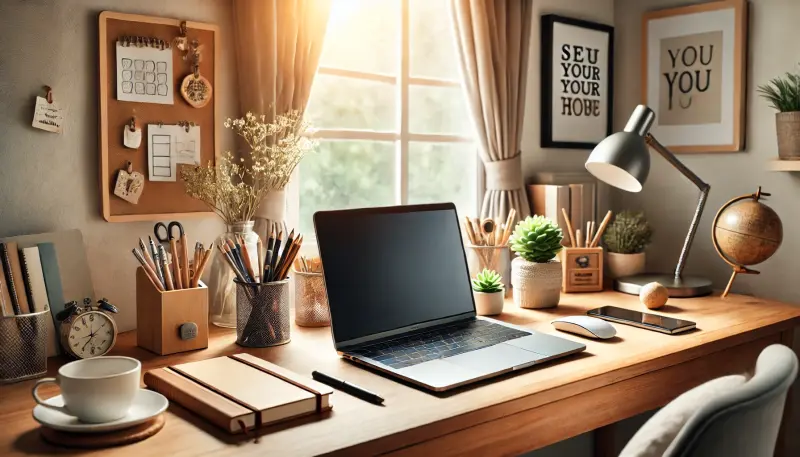Tips for Optimizing Your Laptop Usage

In today's fast-paced digital world, laptops have become essential tools for both work and leisure. Whether you use your laptop for professional tasks, studying, or casual browsing, optimizing its performance can significantly enhance your productivity and overall experience. Here are some comprehensive tips to help you make the most of your laptop.
1. Keep Your Laptop Updated
Regularly updating your operating system and software is crucial for maintaining your laptop’s performance and security. Updates often include important bug fixes, performance enhancements, and security patches that protect your device from vulnerabilities. To ensure your laptop runs smoothly, enable automatic updates or check for updates weekly.
2. Optimize Startup Programs
When you turn on your laptop, several programs may launch automatically, slowing down the startup process. By managing your startup programs, you can improve boot time and overall performance. To do this, access your task manager (Ctrl + Shift + Esc on Windows or Command + Option + Esc on Mac), navigate to the startup tab, and disable any unnecessary applications.
3. Maintain Adequate Storage Space
A laptop with low storage space can experience sluggish performance. Regularly delete files and applications you no longer need. Consider using cloud storage services or external hard drives to back up important files, freeing up local storage. As a rule of thumb, aim to keep at least 15-20% of your hard drive free for optimal performance.
4. Manage Your Power Settings
Adjusting your laptop’s power settings can help optimize performance and battery life. For Windows users, access the Control Panel and select Power Options to choose a balanced or high-performance plan. Mac users can adjust their energy preferences in System Preferences under Energy Saver. Customizing these settings based on your usage can enhance battery life and overall efficiency.
5. Utilize Disk Cleanup Tools
Both Windows and macOS offer built-in tools to help you clean up unnecessary files. Use Windows Disk Cleanup to remove temporary files, system files, and more. On a Mac, utilize the Storage Management feature to identify large files and applications that may be taking up unnecessary space. Regular disk cleanups can significantly improve performance.
6. Upgrade Your Hardware
If you frequently find your laptop lagging, it may be time to consider hardware upgrades. Adding more RAM can enhance multitasking capabilities, while switching to a Solid-State Drive (SSD) can drastically improve boot times and file access speeds. These upgrades can breathe new life into an older laptop.
7. Use Efficient Software
Choosing the right applications can have a profound impact on your laptop’s performance. Opt for lightweight software solutions that consume fewer resources. For example, using a simple text editor instead of a full-fledged word processor for basic tasks can free up valuable system resources.
8. Keep Your Laptop Clean
Physical maintenance is just as important as software optimization. Dust and debris can accumulate in your laptop’s vents, causing it to overheat and perform poorly. Regularly clean your laptop by using a soft cloth and compressed air to remove dust from vents and keyboards. Ensure your laptop is in a well-ventilated area to prevent overheating.
9. Manage Browser Tabs and Extensions
Web browsers can consume significant resources, especially with multiple tabs open or numerous extensions installed. Regularly review your open tabs and close those you no longer need. Disable or remove extensions that you don’t actively use, as they can slow down your browsing experience.
10. Utilize Virtual Desktops
For users who juggle multiple tasks, virtual desktops can be a game-changer. Both Windows and macOS offer virtual desktop features that allow you to create separate workspaces. This organization can help minimize clutter and make it easier to switch between different tasks.
11. Set a Regular Maintenance Schedule
Creating a maintenance routine can help ensure your laptop stays in optimal condition. Schedule regular tasks such as software updates, disk cleanups, and hardware checks. Consistency in maintenance can help you avoid larger issues down the line.
12. Invest in a Quality Laptop Stand
Using a laptop stand can improve ergonomics and airflow. Elevating your laptop to eye level can reduce neck strain, while providing better ventilation helps prevent overheating. This small investment can lead to a more comfortable and efficient work environment.
Conclusion
Optimizing your laptop can significantly improve your work efficiency and overall user experience. By following these tips, you can ensure that your device remains fast, responsive, and capable of handling your tasks with ease. Regular maintenance, thoughtful upgrades, and smart usage habits will help you make the most of your laptop for years to come.
Articles
Opt-in for our updates to receive the latest and most fascinating articles right in your inbox.